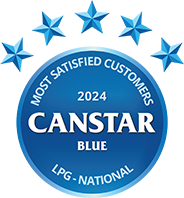Compare Electricity Plans
Compare latest electricity plans and prices.
More than 1,200 bill-paying adults from across Australia have given us their feedback, with suppliers rated on factors including their customer service, delivery service and value for money. If you’re not getting five-star service and value from your LPG supplier, it might be time to try a new one.
Keep in mind though that while our ratings include four of the most prominent LPG suppliers in Australia, you may find others operating in your area.
Canstar Blue surveyed 1,264 Australian households for their feedback on their LPG supplier. Respondents had to live in a house that uses bottled gas and pay the bills for their response to be eligible.
Respondents rate their satisfaction with their LPG supplier from zero to ten, where zero is extremely dissatisfied and ten is extremely satisfied. Provider satisfaction was rated by respondents on the following criteria:
The winning brand is the one that receives the highest Overall satisfaction rating once all the scores from the Overall satisfaction criteria are combined and averaged.
Brands must have received at least 30 responses to be included, so not all brands available in the market have been compared in this survey. The brands rated in this survey are listed below in order of best overall satisfaction.
Supagas proved a clear winner for a fourth year straight – not just for overall satisfaction, but also when it comes to value for money. It was four stars overall for Kleenheat, Origin Energy and Elgas.
Find more detailed information on our ratings methodology.
![]()
Supagas has smoked the competition once again, taking out five stars across almost all research categories, including overall satisfaction, value for money, customer service, bill and cost clarity and ease of sign-up/purchase. For its delivery service however, it scored four stars.
Supagas claims to be a leading supplier of LPG in Australia, with a history dating back to 1968. The company has a strong focus on safety, for its customers, employees and the wider community. It provides LPG in a wide range of bottle sizes, each suited to different requirements. These can be rented on a monthly basis or purchased outright. Customers can also wait for home delivery or visit their nearest Supagas location to swap their empty cylinders for a new or reconditioned full cylinder. In addition to LPG, Supagas also sells and rents outdoor heaters.
![]()
Kleenheat earned four stars for overall satisfaction and value for money in this year’s ratings. It notched up to five stars for its delivery service while its bill and cost clarity, customer service, and ease of sign-up/purchase scored three stars.
Kleenheat is one of the major natural gas retailers in Perth. It is also a prominent LPG supplier in Western Australia and the Northern Territory, from Broome to Albany, Perth to Kalgoorlie and Darwin to Alice Springs. With over 65 years’ local experience, Kleenheat claims it delivers to more places, more often. The retailer’s website also provides a helpful searching tool for customers to identify their nearest dealer. When it comes to the LPG market, Kleenheat offers a discount for new customers on their first order as well as to existing customers who place their order online. It also appears to provide no service charge to new LPG customers for 12 months but you’ll need to check its website for details.
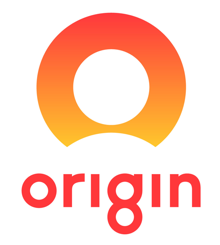
Origin Energy achieved a clean sweep of four stars across all research categories this year.
Origin is one of Australia’s largest suppliers of residential and commercial LPG, in addition to being one of the country’s most prominent electricity, natural gas and solar retailers. When it comes to Origin LPG, the company offers cylinder swaps or scheduled refills by hose. On top of occasional special deals, Origin promises competitive rates, reliable delivery and dedicated phone support.
![]()
Rounding out our ratings this year is Elgas which earned four stars for overall satisfaction and ease of sign-up/purchase. In all other research categories this brand scored three stars.
Elgas is a major player in the residential LPG market. It claims to offer competitive rates, no lock-in contracts and no residential establishment fees. Elgas also boasts a range of helpful products and services, including 24/7 phone and online support. Elgas says it prides itself on safe, sustainable and innovative energy solutions and has gas depots throughout the country, so it is available to most Australians. For those who travel to their local depot for LPG refills, Elgas provides a long list of locations plus other helpful details on its website, including log-in facilities for customers to manage their account, pay bills and check out the latest promotions.

Kelseigh Wrigley covered Australia’s retail energy market, growing her industry specific expertise over the last two years. She holds a Bachelor of Journalism at the Queensland University of Technology and has contributed her skills to online publications Hunter & Bligh and local radio station 4ZZZ.
Meet the Editorial Team
Samantha Mauro-Todd is Canstar Blue’s Consumer Research Specialist, coordinating the consumer research program behind our customer satisfaction awards across Canstar and Canstar Blue in Australia and New Zealand. Sam has earned a Bachelor of Business (Marketing) from Griffith University and, with seven years in market research and two years in marketing, she is experienced in survey design, implementation and analysis, coupled with an understanding of marketing principles and best practice.
Meet the Research TeamLPG is available in most areas across Australia. While many LPG suppliers will only operate locally, a couple of the larger companies – namely Origin, Elgas and Supagas – deliver LPG to most parts of the country. But keep in mind that the further your supplier needs to travel, the more you may pay for LPG delivery.

LPG and natural gas are used for similar purposes, but there are some key differences. LPG is delivered in canisters or tanks and customers must order a refill or replacement tank every now and again. Natural gas or ‘mains gas’ however, is delivered straight to homes or businesses via a large distribution network of pipelines.
Natural gas services are similar to electricity, whereby customers have on-demand access to the gas they need and simply pay for whatever is used at the end of the billing period. Not all Aussie households have a mains gas connection; however, you may be able to organise a mains gas connection for a fee. Keep in mind that this can be quite expensive so it could be more affordable just to use LPG instead.
Another point is that natural gas is comprised mostly of methane, while LPG is predominantly butane and propane, which burns hotter and cleaner than natural gas. This means LPG is the gas of choice for lots of restaurants, cafes and other businesses.
Natural gas is generally cheaper per megajoule (MJ) than LPG, but natural gas customers must pay an additional ‘supply charge’ – a fee of about 60 to 90 cents for each day you’re connected to the mains gas network. This charge applies regardless of whether you actually use any gas or not.
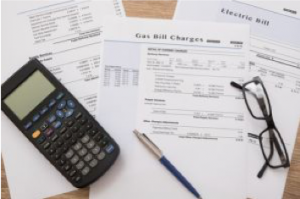
LPG customers may also have to pay a ‘gas service charge’, which is essentially a rental charge for the gas cylinders. This is generally about $35 to $45 a year.
For this reason, natural gas may be better suited for customers with high gas usage, because their usage rate savings could help to negate the additional supply charges. Households with moderate or low gas usage would possibly be better off with LPG, even if a mains gas connection is available. This all depends on a number of variables, including the price of LPG at the time, what natural gas deals are available in your area and how many appliances you are looking to power with the fuel type.
You’re free to switch to LPG from natural gas (or vice versa) at any time, provided that you have access to the mains gas network. With that said, it’s important to be mindful of a few things:
The price you pay for LPG will likely depend on your location and the distance the supplier must travel to deliver LPG to your home (if you have it delivered).
When it comes to LPG refills, most suppliers will send someone out to swap over your empty (or near empty) gas cylinder with a full one whenever you let them know you’re running low. However, some of the larger providers, such as Origin, may send out an LPG truck to top up your gas supply periodically, thus eliminating the need for you to repeatedly contact your gas company.
LPG is safe, provided it’s used appropriately as per the instructions. You should not tamper with the safety valve or other cylinder fittings and you should leave any modifications or maintenance work to qualified gasfitters. Also, check for a gas appliance certification label on any gas appliances to ensure it is approved for LPG use. If you attempt to use a gas appliance and it fails to light, give it a few minutes to air out the gas before attempting it again. If you notice a gas leak, then turn off the cylinder at the valve and contact your supplier.
While Origin, Elgas and Supagas operate nationally, most LPG suppliers only service particular areas, so location is going to be a major factor in picking where you get your bottled gas from. That said, if you do have more than one or two options where you live, it makes sense to look for a supplier that makes the ordering and delivery process as convenient as possible. As mentioned in this report, most suppliers have helpful and easy-to-use websites. But ultimately, your satisfaction will likely be determined by the price you pay and the customer service you receive – not just online, but on the phone and during your delivery process too.
Our survey found that just 37% of customers believe they get a good deal on LPG, while only a little over one in 10 (13%) have switched suppliers in the last two years. This number may be so low because many households won’t have options to switch, but for those who do, it could be time to shop around.
Here are the previous winners of Canstar Blue’s LPG Suppliers – National Customer Satisfaction Award:

Best-Rated LPG Gas Suppliers - June 26th
Natural gas and LPG are both reliable sources of power, but which is best for your home? Compare LPG and natural gas with Canstar Blue.
– Read more
Best-Rated LPG Gas Suppliers - May 23rd
Whether you’re firing up the barbeque, flicking on a heater or turning on the hot water tap, most of us use liquid petroleum gas (LPG) every day. But where does this gas come from, what …
– Read more
Best-Rated LPG Gas Suppliers - August 1st
There’s nothing quite like the comfort of a guarantee, whether it comes in the form of an engagement ring, or just an order confirmation email from the pizza place down the road.
So, when it comes …
– Read more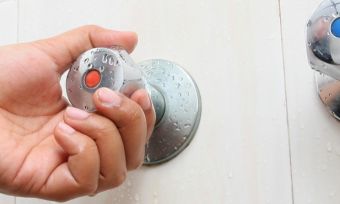
Appliances - June 28th
From electric to gas and now even solar, there are several options for homeowners when it comes to water heaters. Arguably one of the most popular forms of hot water systems though is gas-powered. But …
– Read more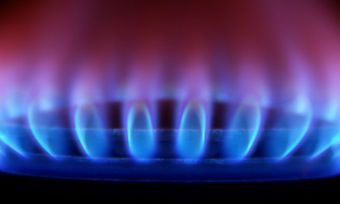
Best-Rated LPG Gas Suppliers - January 17th
Chicken salt and chips, meat pie and tomato sauce, Rhonda and Ketut – if there’s one thing Aussies know, it’s how to spot a good pair. So, if two is better than one, does that …
– Read more